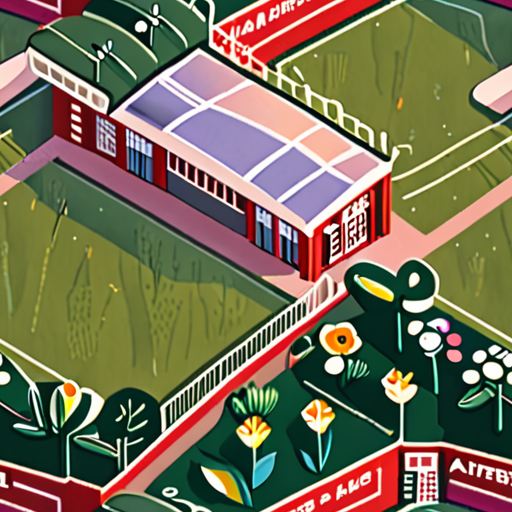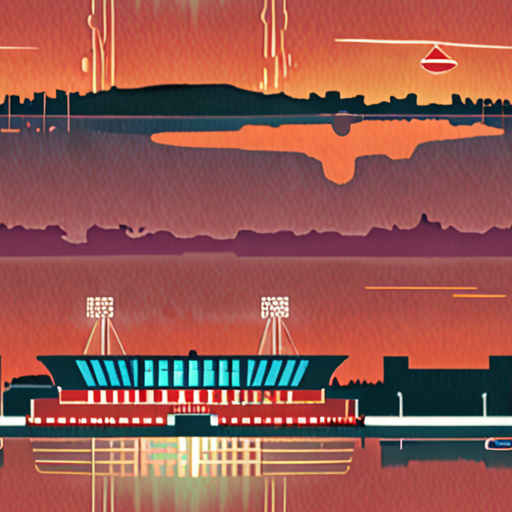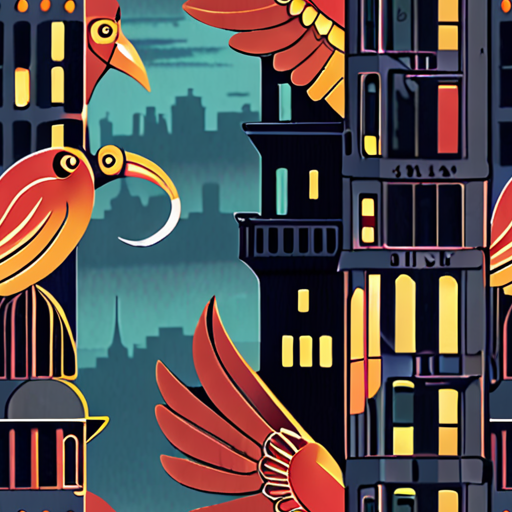“`html
As the vibrant chants of Liverpool’s passionate supporters echo through the historic stands, the electric atmosphere at Anfield stands as a testament to the enduring legacy of one of England’s most iconic football clubs. In this in-depth exploration, we delve into the intricate tapestry of Anfield match opinions, unraveling the mysteries behind its unique aura. From the ritualistic symphony of player nicknames to the evocative power of community support, we illuminate the pathways to cultivating an immersive fan experience. As modern football arenas increasingly embrace commercialization, we scrutinize the balance between tradition and innovation. Why, despite its rich legacy, can’t Anfield host international matches? And how does life intertwine with the rhythm of football just beyond its gates? Furthermore, we journey through Liverpool’s lavish enclaves, drawing parallels with American cities that share its kindred spirit. Ultimately, we navigate the digital realms where fans gather online to dissect every heartbeat of the match, offering insights into the evolving landscape of public engagement.
“`
The Evolution of Anfield Atmosphere
We’ve witnessed significant changes in the demographics of our beloved Anfield Stadium, which has impacted the overall atmosphere.
- The number of season ticket holders has decreased to approximately 28,000, out of a total capacity of 61,276.
- The average age of match-going fans is increasing, which may contribute to a shift in the traditional atmosphere.
- A staggering 30,000+ names are currently on the waiting list, making it challenging for new fans to secure seats.
- Ticket prices have become prohibitively expensive for many, further limiting accessibility and contributing to a decline in attendance.
As a result, we’re seeing a change in the composition of our fan base, which may affect the electric atmosphere that once defined Anfield.
Impact on the Fan Experience
The evolving demographics and increased costs have led to a decrease in the number of young fans attending matches, potentially altering the dynamic of the stadium.
- This shift may result in a less energetic and less vocal crowd, which could impact the team’s performance and overall match-day experience.
- The loss of younger fans may also lead to a decline in the sense of community and camaraderie that defines the Anfield atmosphere.
Efforts to Revitalize the Atmosphere
To combat these changes, the club and its supporters are working together to find solutions that will revitalize the atmosphere and make Anfield an even more intimidating venue for opposing teams.
- Initiatives aimed at reducing ticket prices and increasing accessibility are underway, with the hope of attracting a more diverse and youthful fan base.
- The club is also exploring ways to enhance the match-day experience, including improved amenities and entertainment options.
A Brighter Future for Anfield?
While challenges lie ahead, there is reason to believe that the Anfield atmosphere can be revitalized and continue to thrive.
By addressing the issues affecting the demographics and fan experience, we can work towards creating a brighter future for Anfield and ensuring that it remains one of the most iconic and intimidating stadiums in world football.
Liverpool Fans
We’re known as Reds, Scousers, and Kopites, united by our love for Liverpool Football Club.
- Reds: A nod to our iconic red jerseys, which have become synonymous with the club’s identity.
- Scousers: A term that reflects our city’s rich history and cultural heritage, born out of the Scouse dialect spoken by locals.
- Kopites: Named after the famous Spion Kop stand at Anfield Stadium, where we proudly sing and cheer on our team.
As a collective, we embody the spirit of Liverpool FC – passionate, loyal, and dedicated to supporting our beloved team through thick and thin.
Our Community
The Anfield Talk is proud to be part of this vibrant community, fostering a space for discussion, debate, and celebration of all things LFC.
- We provide in-depth match analysis, player profiles, and the latest updates on LFC news.
- Our platform offers comprehensive coverage on matches, player performance insights, and fan-centered articles.
- We strive to keep fans engaged through detailed articles, exclusive content, and community-driven features.
Competitors
We acknowledge the presence of other dedicated Liverpool fan platforms, such as LFCFans.net and RedsZone.co.uk .
While we respect their contributions to the LFC community, our primary focus remains on delivering high-quality content and engaging experiences for our readers.

Why Can’t Anfield Host International Matches?
Anfield, the iconic home stadium of Liverpool Football Club, has been a venue for numerous high-profile matches, but there’s a reason it can’t host international matches.
- The primary reason is that Anfield’s pitch does not meet the minimum requirements set by UEFA for hosting international matches.
- The stadium’s playing surface is smaller than the standard dimensions of 105m by 68m required by UEFA for host stadiums.
This limitation affects Anfield’s ability to host major tournaments like the European Championship, as well as prestigious club competitions like the Champions League and Europa League finals.
Liverpool FC has explored options to upgrade the stadium, but these plans are subject to various factors, including cost, feasibility, and regulatory approvals.
In the meantime, Anfield remains a beloved venue for domestic and cup matches, but its limitations prevent it from hosting the biggest international events.
As a result, Liverpool FC fans continue to support their team at Anfield, while also looking forward to future developments that might enable the stadium to host more significant matches.
For now, Anfield remains a special place for Reds fans worldwide, and its unique character continues to make it an exciting destination for football enthusiasts.

Is Anfield a Nice Place to Live?
As a resident of Anfield, I can confidently say that it’s a fantastic place to live, despite its reputation for being a bustling neighborhood.
- The area has undergone significant regeneration in recent years, thanks in part to the global attention brought by Liverpool FC’s success.
- This transformation has led to improved amenities, services, and infrastructure, making Anfield a more desirable place to call home.
Pros of Living in Anfield:
- Community Spirit: Anfield is known for its strong sense of community, with many residents actively involved in local initiatives and events.
- Access to Amenities: The area boasts a range of shops, restaurants, and entertainment venues, catering to diverse tastes and preferences.
- Transportation Links: Anfield is well-connected to the rest of Liverpool, with regular bus services and easy access to major roads.
- Sports Facilities: As the home of Liverpool FC, Anfield offers excellent sports facilities, including the famous stadium itself.
Cons of Living in Anfield:
- Noise Pollution: As a busy neighborhood, Anfield can be noisy, particularly during match days and peak hours.
- Parking Challenges: Finding parking in Anfield can be difficult, especially during events and rush hour.
- Road Congestion: The area experiences traffic congestion, which can make commuting and navigating the streets challenging.
Conclusion:
While Anfield may have its drawbacks, the pros far outweigh the cons, making it an excellent choice for those looking to live in a vibrant, dynamic neighborhood with a strong sense of community.
The Posh Part of Liverpool
Mossley Hill is one of Liverpool’s most affluent and sought-after neighbourhoods, offering an appealing combination of elegant homes, excellent schools, and diverse local amenities.
- Mossley Hill is characterised by its stunning Victorian and Edwardian architecture, making it a desirable place to live for those who appreciate history and aesthetics.
- The area boasts a range of high-end properties, including grand mansions and beautifully maintained semi-detached houses, which contribute to its upscale reputation.
- In addition to its impressive housing stock, Mossley Hill offers easy access to excellent schools, including the highly-regarded St Julie’s Catholic High School and the independent Liverpool College.
- The area is also home to a variety of local amenities, including boutique shops, restaurants, and cafes, which cater to the needs of residents and visitors alike.
- For those who enjoy outdoor activities, Mossley Hill has several parks and green spaces, including Sefton Park and Princes Park, which offer scenic walks and opportunities for recreation.
- Furthermore, the area’s proximity to the city centre makes it an attractive option for those who want to be close to the action but still enjoy a peaceful and exclusive lifestyle.
- Other affluent areas in Liverpool worth mentioning include Wavertree, which is known for its beautiful parks and gardens, and Woolton, which boasts a charming village atmosphere and a range of high-end properties.
- Overall, Mossley Hill stands out as one of the poshest parts of Liverpool due to its unique blend of history, luxury, and convenience.

Which American City Is Most Like Liverpool?
While there isn’t an exact equivalent to Liverpool in the United States, several cities share similarities with the Scouse metropolis.
- Boston
- New York City
- Chicago
- Philadelphia
- Pittsburgh
The reasons why these cities are comparable to Liverpool vary, ranging from historical significance to cultural influences.
Historical Significance
Boston, for instance, has a rich history dating back to the 17th century, much like Liverpool’s storied past.
- Boston’s Freedom Trail showcases its pivotal role in American independence.
- Liverpool’s Albert Dock, meanwhile, highlights its maritime heritage.
Cultural Influences
New York City, with its melting pot of cultures, bears some resemblance to Liverpool’s cosmopolitan atmosphere.
- The Big Apple’s diverse neighborhoods, such as Chinatown and Little Italy, mirror Liverpool’s own multicultural districts.
- The city’s iconic music scene, from jazz to hip-hop, echoes Liverpool’s legendary rock ‘n’ roll heritage.
Economic Similarities
Chicago and Philadelphia, both major industrial centers, share economic parallels with Liverpool’s manufacturing past.
- Chicago’s steel industry, for example, mirrors Liverpool’s historic shipbuilding and engineering sectors.
- Philadelphia’s pharmaceutical industry, meanwhile, reflects Liverpool’s own medical and scientific contributions.
Sports Culture
Pittsburgh, home to the Steelers and Pirates, shares a sports culture similar to Liverpool’s passionate football fandom.
- The Steel City’s dedication to its teams is reminiscent of Liverpool FC’s loyal supporter base.
- The city’s sports venues, such as Heinz Field and PNC Park, echo Liverpool’s own iconic stadiums, like Anfield.
Conclusion
In conclusion, while no American city perfectly replicates Liverpool’s unique blend of history, culture, and economy, several cities come close.
From Boston’s historical significance to Pittsburgh’s sports culture, each city offers a distinct yet relatable aspect of the Scouse metropolis.

0 Comments